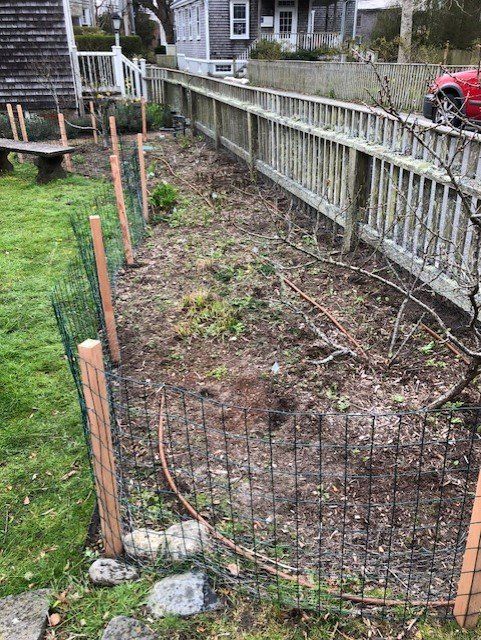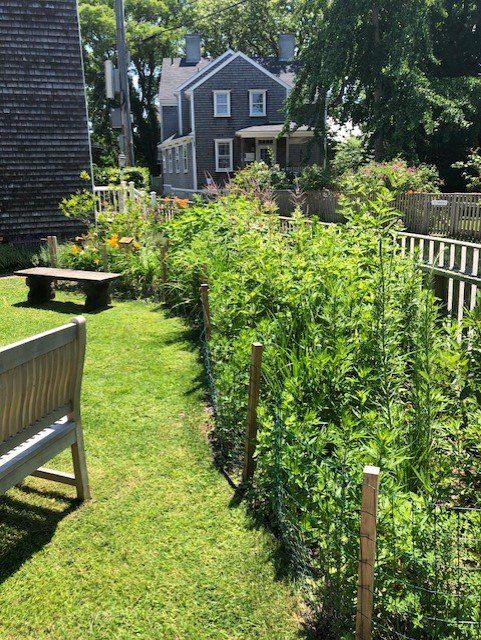Some Bunny
Bunny fence installed in April.
Bunny fence in July with happy native plants – and a few garden varieties to boot!
If you read this blog then you have read several times of my bemoaning the presence of rabbits at the MMA – particularly the Mitchell House. As a science-based organization and myself a lover of wildlife, I have no problems with them. As a gardener, I do. And, I have written numerous times about the bunny population here on Vestal Street.
Well, it seems that maybe due to the COVID-19/Coronavirus pandemic and fewer people around, that the bunnies have been having something of a baby boom. I have SEVEN baby rabbits of various sizes! SEVEN! And they have an even greater audacity than their predecessors – all just lying about in the garden in front of the Maria Mitchell Vestal Street Observatory (MMO) as if they own the lawn and garden. They have no fear – though I do scare them as much as possible to teach them to have some fear.
This spring, once the Town allowed and I had my special permission permit, I installed a bunny fence to keep them out of the main wildflower garden in front of the MMO. It looks a bit different from the photograph here as it has actually kept them out – except for one – and now everything is flourishing! Joe Pye Weed, Prickly Pear Cactus, Blazing Star, Mallow, Mountain Mint, Pearly Everlasting, Butterfly Weed, and more! The one rascal who got in – a tiny baby – was ultimately chased out with the help of a neighbor – both of us wearing our masks and social distancing. The bunny had managed to squeak past the deer fencing I had to use when I ran out of chicken wire for the bottom of the fence. Yes, its green wire deer fencing at about two or so feet and then a one-foot addition of chicken wire at the base to keep out the baby bunnies. I had shown up when the neighbors texted me to tell me they saw “someone” in there. Luckily, I arrived with more chicken wire for the 12-inch deer fenced gap that the baby bunny had gone through. A friend unearthed the much-needed chicken wire in his shed. Seriously – the baby bunny GNAWED through the deer fencing – and then did it in front of me to escape my wrath!
But in any case, it seems to have done the trick – with a thank you to a MMA board member and fellow gardener who told me I had to or I wouldn’t win and I was being too nice. And to the neighbors and their loveable dog who spied the invader.
Now, I have to figure out a historically-accurate bunny fence that’s low for the Mitchell House garden – which has been completely wasted by the bunnies! So much for 500 heirloom Heavenly Blue Morning Glory seeds – gone! I guess I’m going to have to weave a twig fence!
JNLF
Recent Posts






